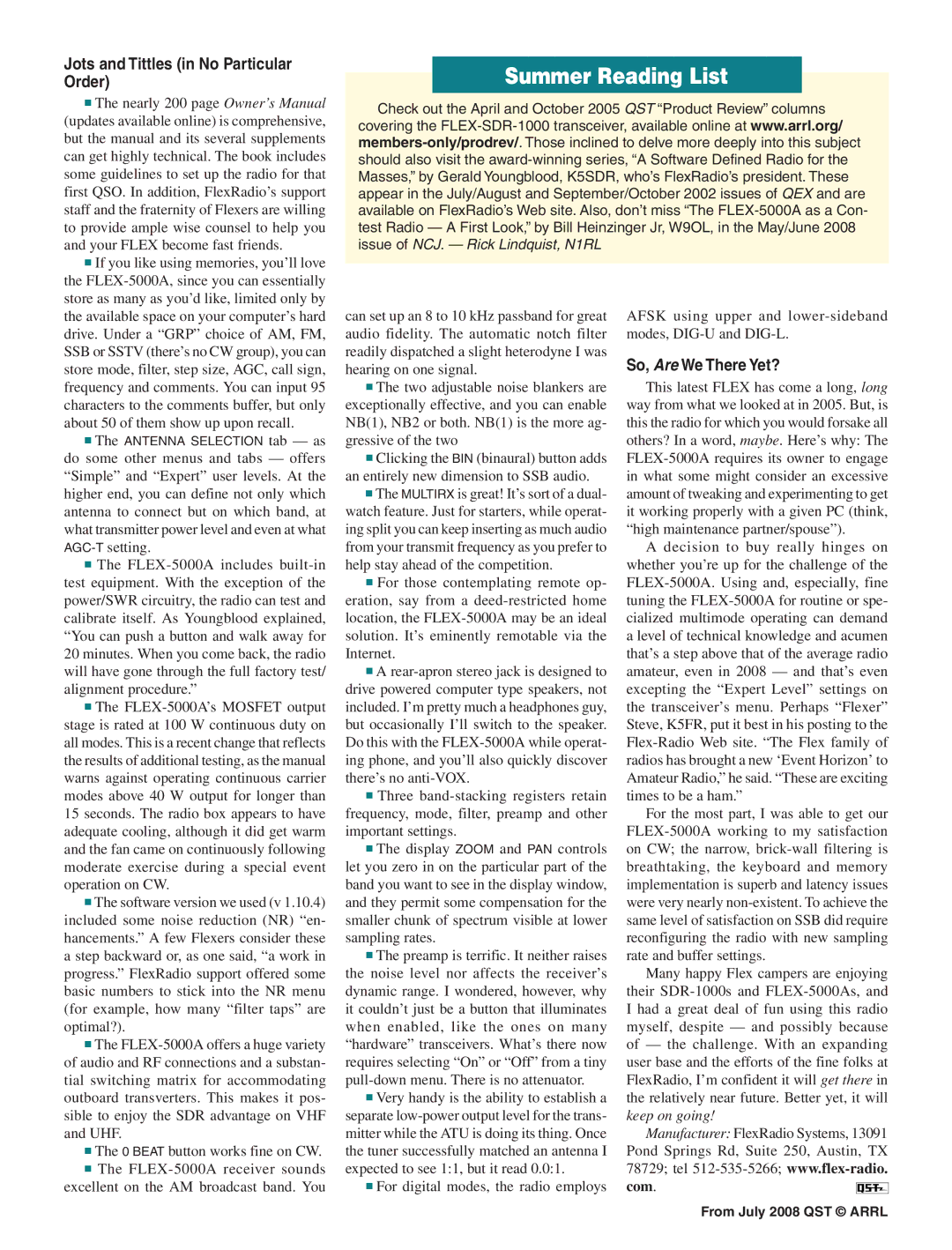
Jots and Tittles (in No Particular Order)
The nearly 200 page Owner’s Manual (updates available online) is comprehensive, but the manual and its several supplements can get highly technical. The book includes some guidelines to set up the radio for that first QSO. In addition, FlexRadio’s support staff and the fraternity of Flexers are willing to provide ample wise counsel to help you and your FLEX become fast friends.
Summer Reading List
Check out the April and October 2005 QST “Product Review” columns covering the
If you like using memories, you’ll love the
Thetab — as do some other menus and tabs — offers “Simple” and “Expert” user levels. At the higher end, you can define not only which antenna to connect but on which band, at what transmitter power level and even at what
The
The
The software version we used (v 1.10.4) included some noise reduction (NR) “en- hancements.” A few Flexers consider these a step backward or, as one said, “a work in progress.” FlexRadio support offered some basic numbers to stick into the NR menu (for example, how many “filter taps” are optimal?).
The
The 0 BEAT button works fine on CW.
The
can set up an 8 to 10 kHz passband for great audio fidelity. The automatic notch filter readily dispatched a slight heterodyne I was hearing on one signal.
The two adjustable noise blankers are exceptionally effective, and you can enable NB(1), NB2 or both. NB(1) is the more ag- gressive of the two
Clicking the BIN (binaural) button adds an entirely new dimension to SSB audio.
The MULTIRX is great! It’s sort of a dual- watch feature. Just for starters, while operat- ing split you can keep inserting as much audio from your transmit frequency as you prefer to help stay ahead of the competition.
For those contemplating remote op- eration, say from a
A
Three
The display ZOOM and PAN controls let you zero in on the particular part of the band you want to see in the display window, and they permit some compensation for the smaller chunk of spectrum visible at lower sampling rates.
The preamp is terrific. It neither raises the noise level nor affects the receiver’s dynamic range. I wondered, however, why it couldn’t just be a button that illuminates when enabled, like the ones on many “hardware” transceivers. What’s there now requires selecting “On” or “Off” from a tiny
Very handy is the ability to establish a separate
For digital modes, the radio employs
AFSK using upper and
So, Are We There Yet?
This latest FLEX has come a long, long way from what we looked at in 2005. But, is this the radio for which you would forsake all others? In a word, maybe. Here’s why: The
A decision to buy really hinges on whether you’re up for the challenge of the
For the most part, I was able to get our
Many happy Flex campers are enjoying their
keep on going!
Manufacturer: FlexRadio Systems, 13091 Pond Springs Rd, Suite 250, Austin, TX 78729; tel
com.
From July 2008 QST © ARRL
